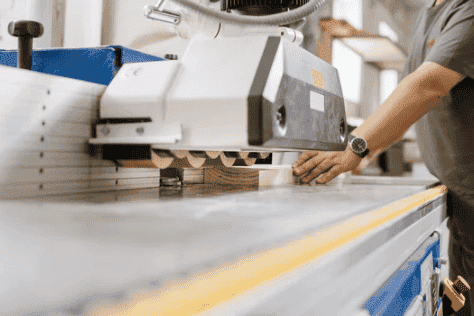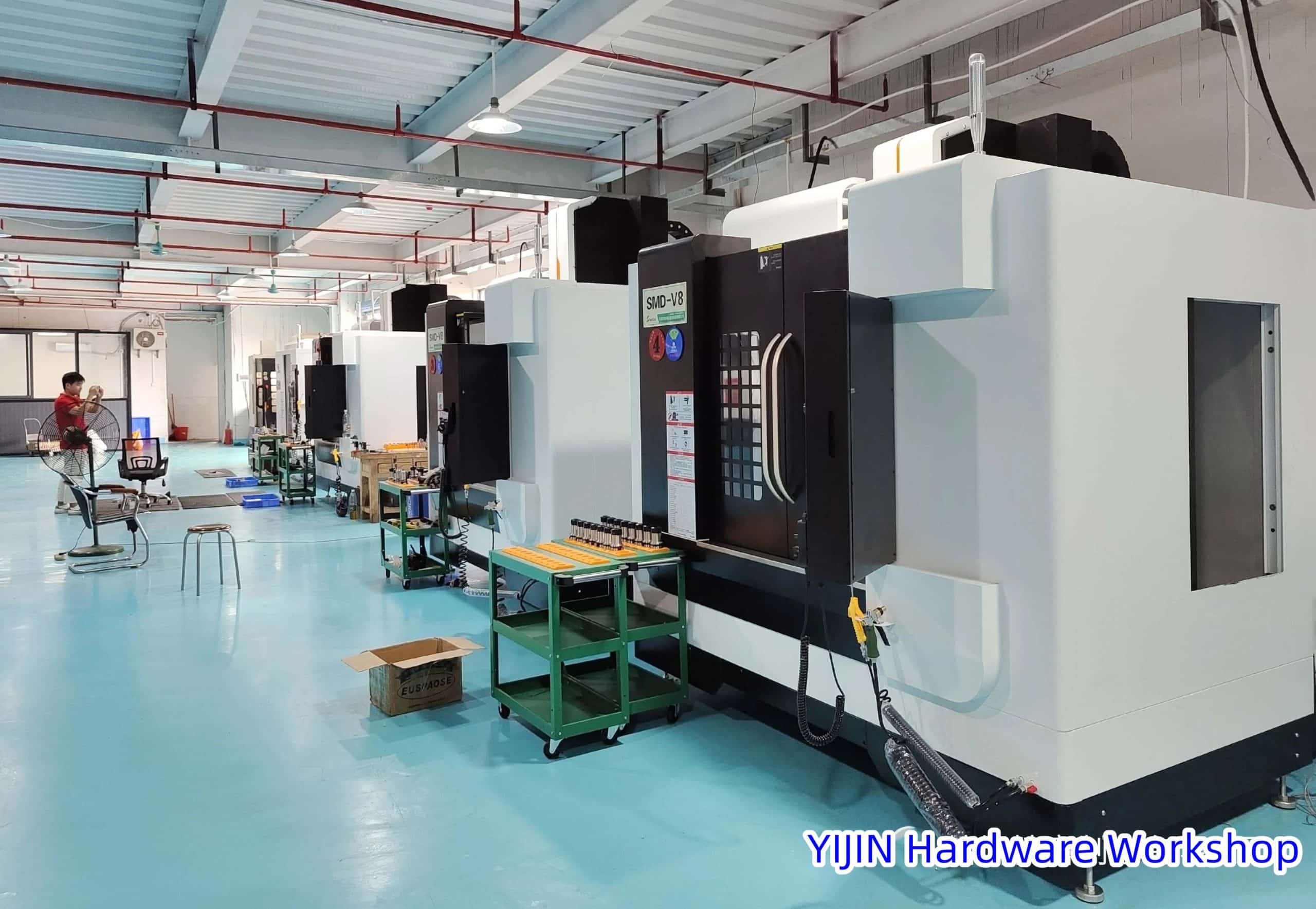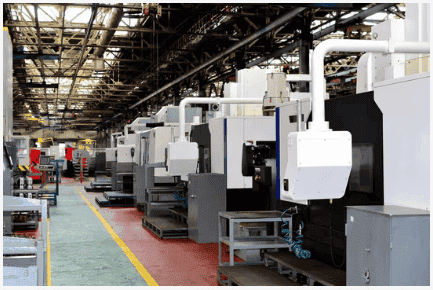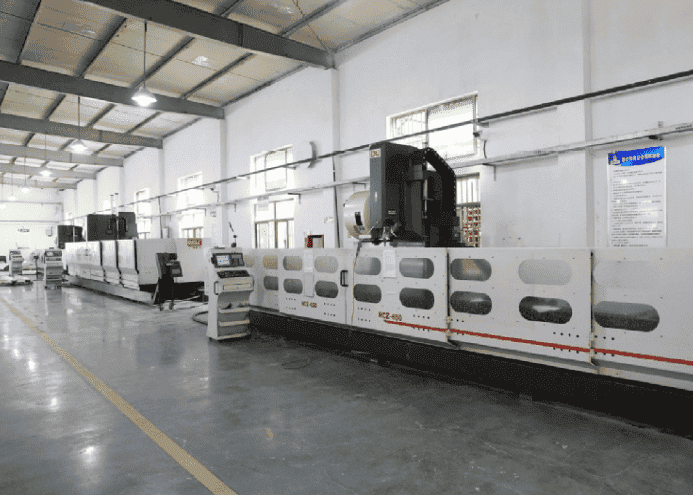Manual machining represents a conventional approach to removing material and forming shapes, hinging on the expertise of machinists who operate manual tools and equipment.
Unlike computer numerical control (CNC) machining, where automated systems follow pre-programmed instructions, manual machining entails direct, hands-on control of cutting tools to craft raw materials into precise components.

What is the Process and Techniques Involved in Manual Machining?
Engaging in manual machining entails utilizing conventional tools and equipment, where the shaping of raw materials into precise components is reliant on the hands-on skill of machinists.
Let’s explore the fundamental process and techniques inherent in manual machining:
Material Selection
Working with a diverse range of materials is within the capability of manual machining, encompassing metals such as aluminum, steel, and brass, as well as plastics and composites.
The selection of material is contingent upon the distinct requirements of the project.
Reading Technical Drawings
Machinists begin by interpreting technical drawings and blueprints that outline the specifications and dimensions of the final product.
Tool Selection
Machinists select appropriate cutting tools based on the material and the operations required.
Common manual machining tools include lathes, milling machines, drills, grinders, and hand tools.
Workpiece Setup
The raw material, known as the workpiece, is securely mounted onto the machine. This setup ensures stability during machining operations.
Turning (Lathe Operations)
During lathe operations, the workpiece revolves as a cutting tool shapes it. This can involve turning cylindrical shapes, facing the end of a workpiece, or creating intricate designs.
Milling (Milling Machine Operations)
Milling is the process of extracting material from a workpiece with the use of rotary cutters.
Machinists have the flexibility to engage in various operations such as face milling, end milling, and slot milling.
Drilling
Machinists use drilling machines to create holes in the workpiece. This may involve drilling through holes, counterboring, countersinking, or tapping threads.
Grinding
Grinding operations use abrasive wheels to achieve fine surface finishes or precise dimensions.
This is common in the final stages of manual machining for precision components.
Measuring and Inspection
Throughout the machining process, machinists use measuring tools such as calipers, micrometers and gauges to ensure that the workpiece meets the specified tolerances.
Adjustments and Iterations
Manual machining requires continuous adjustments based on the machinist’s observations and measurements.
It is an iterative process where fine-tuning is crucial for achieving the desired outcome.
Finishing Touches
Once the primary machining operations are complete, machinists may perform additional finishing touches, such as deburring, polishing, or applying coatings.
Quality Control
At the final stage, machinists conduct a thorough quality control check to ensure that the finished component aligns with the necessary standards, marking its completion.
What are the Types of Manual Machine Tools?
Manual machine tools are traditional machining devices operated by machinists without the use of computer control. These tools are versatile and can be employed in various machining operations.
Here are some common types of manual machine tools:
Lathe
- Description: Lathes serve the purpose of turning, facing, and boring cylindrical workpieces. In this process, the workpiece rotates, and a cutting tool is skillfully applied to shape it, revealing the precision and artistry involved in the machining craft.
- Operations: Turning, facing, drilling, reaming, knurling.
Milling Machine
- Description: Milling machines employ rotary cutters to eliminate material from a workpiece, giving rise to surfaces that can be flat or intricately contoured.
- Operations: Face milling, end milling, slot milling, drilling, and other complex machining.
Drill Press
- Description: Drill presses are used for drilling holes in a workpiece. They consist of a rotating spindle and a stationary worktable.
- Operations: Drilling, tapping, counterboring.
Grinding Machine
- Description: Grinding machines employ abrasive wheels in the meticulous process of material removal, skillfully achieving finely crafted surface finishes.
- Operations: Surface grinding, cylindrical grinding, tool and cutter grinding.
Shaper
- Description: A shaper produces flat surfaces using a single-point cutting tool. The workpiece is mounted on a reciprocating table.
- Operations: Shaping, keyway cutting.
Planer
- Description: Planers are larger versions of shapers, used for machining large and heavy workpieces.
- Operations: Planning large surfaces.
Band Saw
- Description: Band saws skillfully utilize a continuous band of toothed metal to adeptly cut through a diverse array of materials.
- Operations: Cutting straight or curved lines in materials.
Bench Grinder
- Description: Bench grinders are stationary machines equipped with grinding wheels for sharpening and shaping tools.
- Operations: Tool sharpening, deburring.
Boring Mill
- Description: Boring mills come into play when there’s a need to expand existing holes or meticulously craft precise cylindrical cavities.
- Operations: Boring, drilling.
Tapping Machine
- Description: Tapping machines automate the process of creating threads in a workpiece.
- Operations: Tapping threads.
Hacksaw
- Description: Hacksaws are hand tools with a fine-toothed blade used for cutting metal.
- Operations: Metal cutting.
Screw Cutting Lathe
- Description: These lathes are specialized for cutting threads on a workpiece.
- Operations: Screw cutting.
These manual machine tools require skilled operators to set up, operate, and produce precision components. While computer numerical control (CNC) machining has become prominent, manual machining remains essential for specific applications and industries that value hands-on craftsmanship and versatility.
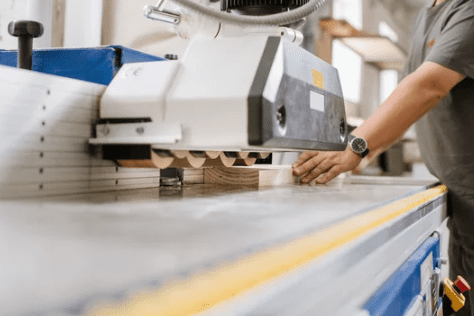
Where Manual Machining is Commonly Used?
Manual machining remains relevant and is commonly used in various industries, especially where precision, craftsmanship, and flexibility are crucial.
Some of the common industries and applications where manual machining is employed include:
Tool and Die Making
The artistry of manual machining unfolds in the creation of precision tools, dies, and molds, a realm where machinists masterfully wield lathes, milling machines, and grinding machines to breathe life into intricate shapes and profiles.
Prototyping
In the early stages of product development, manual machining is often employed for prototyping. Machinists can quickly iterate and customize components to test designs before moving to mass production.
Repair and Maintenance
Industries such as automotive, aerospace, and manufacturing rely on manual machining for repair and maintenance tasks. Machinists can fabricate replacement parts or modify existing components as needed.
Custom Fabrication
Manual machining is well-suited for custom fabrication projects where unique or one-of-a-kind components are required. This includes producing specialized parts for art installations, vintage vehicle restoration, or bespoke machinery.
Education and Training
Manual machining plays a crucial role in vocational training and educational programs for machinists. It helps students understand fundamental machining principles and develop hands-on skills before moving on to more automated processes.
Artistic and Craftsmanship Projects
Artisans and craftsmen often use manual machining techniques to create intricate metalwork for artistic or decorative purposes. This includes crafting metal sculptures, ornamental pieces, and other unique works of art.
Small Batch Production
When dealing with small production runs or low-volume manufacturing, manual machining offers a cost-effective and flexible solution. Machinists can adapt quickly to changing requirements without the need for extensive programming.
Repair Workshops
Repair shops, including those for automotive, industrial machinery, and marine applications, often rely on manual machining for repairing or fabricating specific components that may not be readily available.
Historical Restoration
In the restoration of historical artifacts, structures, or vehicles, manual machining is often used to recreate parts with precision, ensuring authenticity in the restoration process.
Job Shops
In job shops dealing with a variety of machining projects, particularly those demanding swift turnarounds or frequent customization, manual machining techniques are frequently put to use.
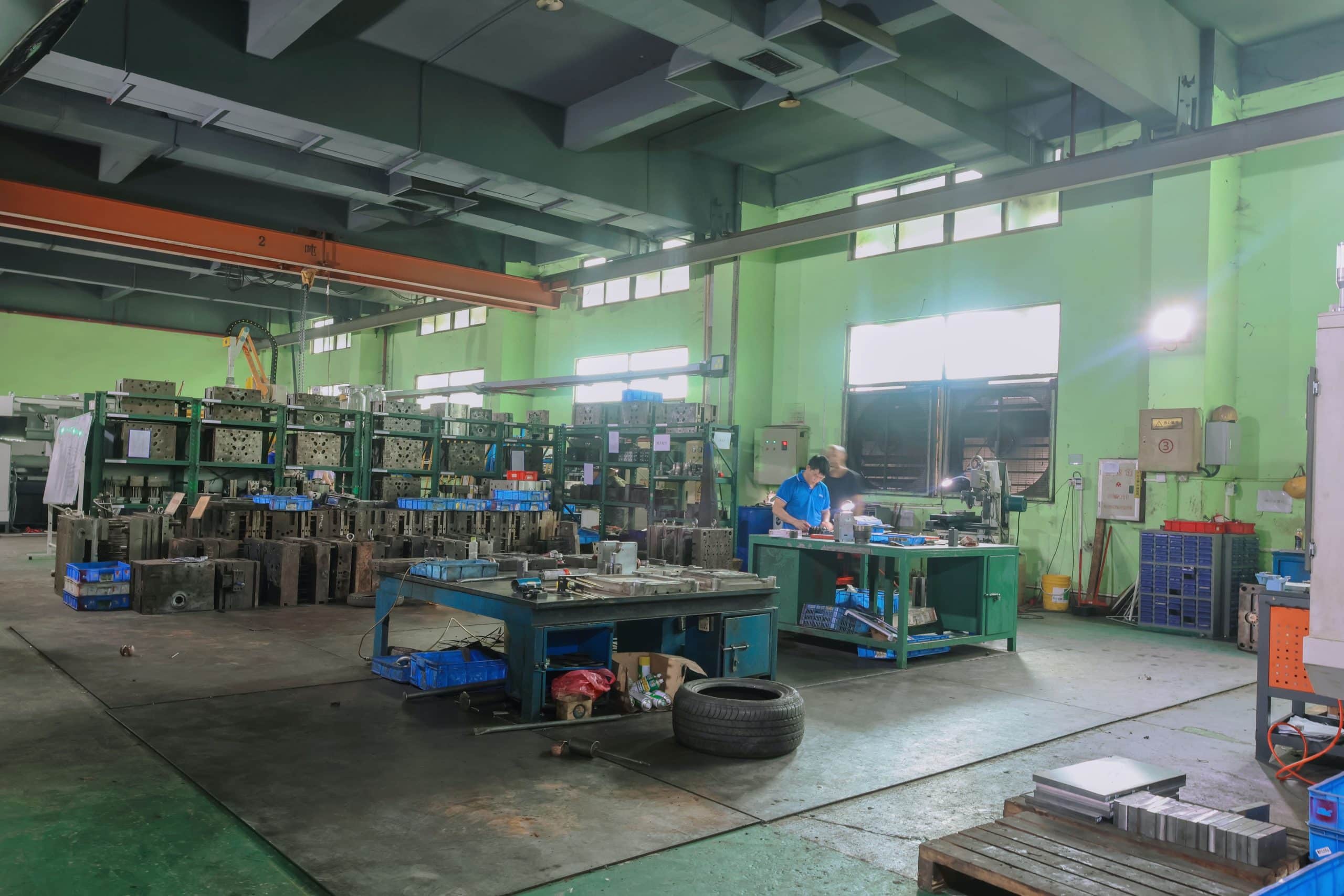
What are the Advantages and Limitations of Manual Machining?
Advantages of Manual Machining:
Versatility
manual techniques empower machinists to swiftly adapt to different materials, shapes, and project demands. Skilled operators, equipped with their expertise, can proficiently manage a diverse array of tasks, all without the necessity for intricate programming.
Cost-Effective for Small Runs
In situations where a limited quantity of parts is required, manual machining might prove more cost-effective compared to the setup and programming complexities associated with CNC machines.
Hands-On Craftsmanship
Engaging in manual machining demands a significant level of skill and craftsmanship, nurturing a profound connection between machinists and their work. This approach permits a hands-on method for crafting and shaping precision components.
Rapid Setup
The setup time for manual machines is often quicker compared to CNC machines.
Machinists can make adjustments and start machining rapidly, making it efficient for certain applications.
Educational Value
Manual machining serves as an excellent educational tool for training machinists.
It helps individuals develop a fundamental understanding of machining principles before moving on to more automated processes.
Adaptability to Various Materials
Seasoned manual machinists exhibit a mastery that extends across a spectrum of materials—metals, plastics, and composites—all managed with finesse and expertise. Notably, they navigate this diversity without the need for specialized tooling or elaborate setups, showcasing a skill set that seamlessly adapts to the demands of the trade.
Limitations of Manual Machining
Limited Precision
Achieving extremely tight tolerances consistently can be challenging with manual machining. CNC machines are often more suitable for tasks demanding high precision.
Labor-Intensive
Engaging in manual machining demands a considerable investment of labor, placing substantial reliance on the nuanced skills and seasoned expertise of the machinist. This reliance can result in extended production times, particularly for projects with intricate complexities.
Limited Complexity
Manual machines may struggle with highly complex designs or geometries that require intricate and precise movements. CNC machines, with their programmable capabilities, are better suited for such tasks.
Higher Scrap Rates
The likelihood of errors, especially during the initial setup or in the absence of CNC automation, can result in higher scrap rates compared to CNC machining.
Limited Reproducibility
Reproducing identical parts with high consistency can be challenging in manual machining. CNC machines excel in producing large quantities of identical components.
Dependence on Operator Skill
The quality and efficiency of manual machining are heavily dependent on the skill and experience of the machinist. Variability among operators may lead to inconsistencies in the finished products.
Not Suitable for High-Volume Production
For large-scale production runs, manual machining is not as efficient as CNC machining. CNC machines can operate continuously without the need for constant manual intervention.
Limited Automation
Unlike CNC machines, manual machines lack automation features, reducing their ability to perform tasks continuously without operator intervention.
Conclusion
In the world of manufacturing, manual machining stands as a cornerstone with a rich history and enduring tradition. It remains a crucial player in industries that prioritize precision craftsmanship, adaptability, and the hands-on mastery of skilled professionals.
The flexibility of manual machining serves as a distinct advantage, enabling machinists to swiftly adjust to a range of materials and project intricacies.
This adaptability positions manual machining as a valuable asset, particularly for tasks involving small production runs, prototyping, and specialized applications where the human touch is indispensable.
 Call Us Today! (+86) 188-2253-7569
Call Us Today! (+86) 188-2253-7569